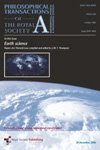If you are looking for some simple but effective calculations to answer such apparently complex question as:
-What is the CO2 pollution from nuclear construction and what is it’s significance? or
-How much CO2 is produced when making the 520,000 cubic meters of concrete and 67,000 tonnes steel needed to make in a 1GW nuclear power station?
Then an excellent place to start is Tim Jarvis’s blog notes. Calculation methods and data sources are clearly stated as are any order of magnitude approximations made.
I strongly recommend the interested reader to visit the above reference and many other posts on Tim's web-log.
Tim's approach naturally caught my attention as a metallurgist, involved in the energy intensive manufacturing of clean steels and special alloys, for many years. Processes involved are often by definition, of the more controllable, electric steelmaking type, whose heat source is totally independent of chemically produced heat, eg. from carbon combustion with oxygen (CO2)or other chemical or metallic additions. High duty high reliability applications would typically include high temperature (creep resistant = slow stretching or flow) corrosion resistant, high strength and toughness aeronautic and nuclear quality grades...
Therefore, I am particularly pleased to reference more widely, sources of CO2 pollution from steelmaking mostly from Tim’s site but also my own questioning leading to a short review from IISI “International Iron & Steel Institute's data.
References
1. Danish Technology Institute report on CO2 in concrete production.
2. Blue Scope Steel
3. Azom Materials suggests around 2 tonnes of CO2 per tonne of steel.
4. Tata Steel claims
between 1.2 and 1.9 tonnes of CO2 per tonne of steel, depending on the process.
5. The International Iron & Steel Institute (IISI), based in London is probably one of the most authoritative if not the most authoritative global reference for CO2 in crude steel.
Jarvis concludes, as his article title indicates that:
CO2 pollution from nuclear construction is irrelevant
He recognises and pin-points the many of the implications for energy sources and the urgency required if CO2 reduction is to be properly addressed.
"This ignores the pollution from getting the fuel and running the plant. Also remember the CO2 is largely produced up front, which is bad news for quick CO2 reduction, but even building 10 GW of capacity to replace the UK's ageing plants will only produce 3 million tonnes of CO2 during construction - less than 1% of UK CO2 pollution in one year."
Thanks Tim for an enlightening piece of work.
All My Pages
Where my visitors are
A380's TRENT XWB
Materials Science and Engineering, Durable Development, Recycling..

Custom Search
Blog List-Free Science and Engineering Information Resources cf also Side and Bottom menu bars
-
-
Research Headlines - Motoarele cu ardere internă au un viitor luminos datorită aprinderii cu laser - [image: Image]Până să devină practice și tuturor accesibile mașinile electrice și alte inovații energetice, va mai fi larg folosit motorul cu ardere, rezul...4 years ago
-
Research Headlines - Inteligentne miasta zorientowane na obywateli - [image: Image]Dzięki technologiom IT usługi miejskie mogą być bardziej wydajne, dostępne i przyjazne dla środowiska. By takie rozwiązania były efektywne, m...4 years ago
-
Research Headlines - En route to safer, more reliable autonomous driving - [image: Image]The development of autonomous driving systems is currently a focus of research for the automotive industry. An EU-funded project has moved wo...4 years ago
-
Instant Inflation Systems for Stand-Up Paddle Boards - Inflatable Stand-Up Paddles (SUP) have provided great flexibility to enthusiasts and allowed the sport to grow in popularity. However, manually or electr...6 years ago
-
The List of Online and Free Access Journals about Metallurgy , Mining - The List of Online and Free Access Journals about Metallurgy and Mining RKOJ = Related Keywords of the Journal Open Mineral Processing Journal RKOJ: ...15 years ago
-
-
Scientific Reports - nature.com science feeds
Physical sciences : nature.com subject feeds
Materials science : nature.com subject feeds
Thursday, 20 March 2008
Subscribe to:
Post Comments (Atom)






















No comments:
Post a Comment